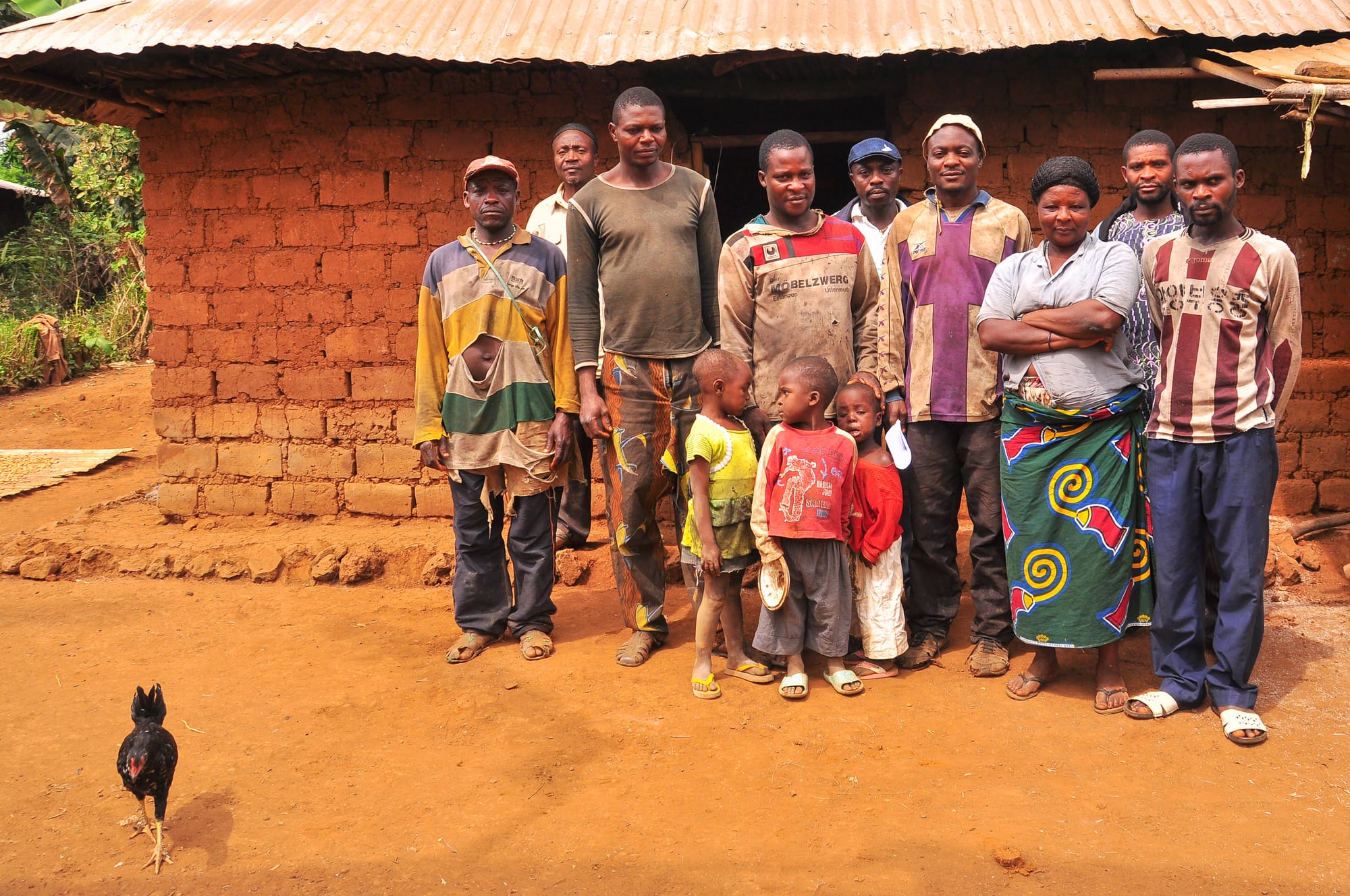Lake Nyo's Resseltment Refugee Camps

Reignite received a request for help through the Diocese of Bamenda and Father Victor Fogoh was in charge and coordinator of the trip from Bambuí to Yemgeh. A field visit was carried out to prepare an evaluation report and verify the feasibility of a program to help refugees from Lake Nyo's resettlement camps, for one week.
At about 9 p. m. on Thursday 21 August 1986 in Cameroon an enormous volume of carbon dioxide (CO2) gas was released from Lake Nyos, a volcanic crater lake in Cameroon. The gas flowed down towards nearby settlements and killed approximately 1,800 people, 3000 cattle, and countless wild animals, birds and insects – in short almost every living creature for miles around.
The official human death toll was only an estimate, the reason being that before competent authorities who collected statistics on the mortality rate could reach the disaster area, some survivors had already begun to bury victims in mass graves, and many terrified survivors had even fled corpse-filled villages and hid themselves in the forest.
The impact of this event resulted in the massive involuntary resettlement of people from nearby settlements. Temporary resettlement sites were established for disaster victims, especially for treatment purposes, before their being transported to permanent resettlement sites.
Permanent resettlement was the third and major phase of the rehabilitation programme for the Lake Nyos survivors. The prime objective of the programme was to construct permanent resettlement sites and assist the survivors to re-establish normal lifestylesThe construction of permanent resettlement sites for the Lake Nyos victims had several repercussions.
First, several nuclear families were separated because the experts who designed the programme took into consideration ethnic affinity and not marital relations. Even in extended families, relatives were permanently separated by distances measured in tens of kilometres.
Life in the resettlement camps 21 years after the Lake Nyos disaster was not the best. Inhabitants in Upkwa, Buabua, Kimbi 1, Kimbi 2, Esu, Ipalim, KumFutu 1, Kumfutu 2 and Yemnge camps took time off during the 21st anniversary celebrations in Wum to remember the sad incident which killed over 1,800 people. It was also time for the survivors to express how difficult life had been away from their ancestral land since they were resettled.
Amongst the many problems presented to Governor Koumpa Issa was that they had been crying in the rain for standard educational facilities, health and road infrastructure. Aboubaka Sulemanu, a representative of the survivors said accessibility to their camps was a nightmare, while some camps had schools without roofs, their living houses were dilapidated and there was great need for well-equipped health facilities.
Many of their children could not be educated because parents could not afford their academic requirements granted the fact that they were financially poor (Etaka, 2007). Another crucial problem advocated by the survivors was that of inadequate land for grazing and farming purposes.
The survivors complained that the 30 to 50 square metres of land allotted to each family was too small. Djibril who raised cattle at the Kumfutu 1 Resettlement Camp put it in the clearest terms that we “cannot graze our cows. We cannot even farm on the land to feed our families. So what are we doing here?”
Article from: History Department, The University of Yaounde, Cameroon BY Forka Leypey Mathew Fomine